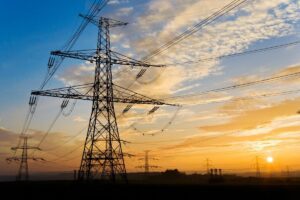
From June 30, Ukraine began exporting electricity to Romania at a capacity of 100 MW, Prime Minister of Ukraine Denys Shmygal announced.
“Today, from 1 a.m., such exports went towards Romania. The initial volume is 100 MW,” he wrote on his telegram channel on Thursday.
He noted that in the first day alone, the state-owned company Ukrenergo earned UAH 10 million by selling access to the interstate section for export, and potentially Ukraine could earn more than UAH 70 billion a year from this.
“The potential for the export of Ukrainian electricity to Europe is up to 2.5 GW. Under this scenario, the state will be able to receive more than UAH 70 billion a year,” Shmyhal said.
The prime minister stressed that the energy visa-free regime with the EU, which began in March this year, gives its very visible and practical result, and the energy sector will become one of the drivers for the recovery of the Ukrainian economy, as it has already become a driver for integration into the EU.
According to the data on the ENTSO-E website, physical exports from Ukraine to Romania are made on June 30 with a flat schedule of 100 MWh.
As reported, Ukrenergo earned more than UAH 10 million at the first auction for the sale of a section to Romania on June 30, and almost UAH 14 million at the second auction, on July 1. The section was divided respectively by 5 and 6 companies. A total of 8 and 10 companies participated in the auction, respectively.
Ukrainian and European energy systems have been operating synchronously since March 16. On June 27, Europe opened electricity exports from Ukraine, which was supposed to start on June 30.
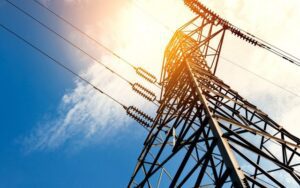
The average price of access to the interstate cross-section for the export of 100 MW of electricity to Romania as of June 30 at UAH 4,200/MWh became a record, and the auction itself for its redemption, held for the first time after the opening of exports by Europe, proves the ability of Ukraine to earn billions of hryvnias on this, Board Chairman of NPC Ukrenergo Volodymyr Kudrytsky said.
“This is the first auction for access to the interstate cross-section after the synchronization of the Ukrainian and European energy systems, and record UAH 4,200 per MWh of access. In just one day, the state-owned company Ukrenergo earned UAH 10 million,” Kudrytsky wrote on his Facebook on the night of Tuesday to Wednesday.
He suggested that if the export capacity was increased to 1,000 MW and auctions were held to buy access to interstate cross-sections at the same level, the state could earn up to UAH 100 million per day, or UAH 36 billion per year. Accordingly, 2,000 MW can bring the state about UAH 72 billion a year, the head of Ukrenergo said.
“This is the price of European rules and the transparency and competitiveness of the auction procedure, as opposed to the traditional desire to ‘steer,’ which can multiply UAH 72 billion by zero. And that is why Ukrenergo will always actively profess and defend these principles – a deviation from them will cost the state very dearly,” he stressed.
As reported, on June 30, the commercial export of the first 100 MW of electricity to Europe will start after the synchronization of the Ukrainian and European energy systems, agreed by ENTSO-E on June 27. At first, the resource will be supplied to Romania, then the directions to Slovakia and Hungary will be opened, but in general, the capacity for export is still 100 MW. In a month, Ukrenergo expects an increase in exports.
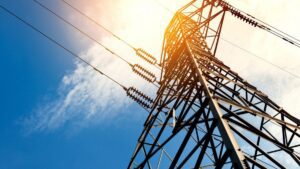
In a few days, Ukraine will start exporting electricity to the synchronous zone of Continental Europe, Volodymyr Kudrytsky, Board Chairman of NPC Ukrenergo, has said on his Facebook page on Tuesday.
“ENTSO-E confirmed on June 27 that Ukrenergo, together with TSOs [Transmission System Operators] of neighboring countries, has successfully met six technical conditions for opening the first 100 MW of electricity exports from Ukraine to Europe. Ukraine can also import this amount of European electricity if necessary,” Kudrytsky wrote.
According to him, today Ukrenergo will hold an open auction for access to the interstate section, at which all electricity producers and other participants will be able to participate.
“This decision finally breaks the ‘aquarium’ of the closed Ukrainian energy market and at the same time brings us closer to full integration into the European energy space,” the head of Ukrenergo stressed.
He noted that in terms of the timing of the opening of exports from the power system newly attached to ENTSO-E, this is an unprecedentedly quick decision. Under the 2017 synchronization agreement, commercial exports from the Ukrainian power grid were to open only one year after the trial synchronization. Ukraine has reached an agreement to open commercial electricity exchanges in three months.
Kudrytsky also saw a certain symbolic coincidence in the date of the ENTSO-E decision on Ukrainian exports.
“Exactly five years ago, Ukrenergo signed the historic agreement with ENTSO-E, thanks to which the Ukrainian energy system is now synchronized with the European one. This agreement set the conditions for future integration with the continental European energy grid, which was to take place in 2023. We achieved the result a year and a half earlier,” the head of Ukrenergo summed up.
Andriy Gerus, Chairman of the Verkhovna Rada Committee on Energy, Housing and Utility Services, said at a press conference on Tuesday that Ukraine would start exporting electricity to the synchronous zone of Continental Europe from July 1.
At the same time, Minister of Energy Herman Haluschenko specified that the export of electricity would start on June 30.
The same information was posted on its website by ENTSO-E.
“The start of commercial electricity exchange with the Ukraine/Moldova power system is scheduled for June 30 at the Ukraine-Romania connection. It is expected that electricity trading on other connections [Ukraine-Slovakia, Ukraine-Hungary and Moldova-Romania] will start later,” the network said in a release on Tuesday.
According to him, the total trading capacity at the first stage will be set at 100 MW. After this initial phase, a gradual increase in trading capacity will be regularly assessed based on grid stability and security considerations, ENTSO-E explained.
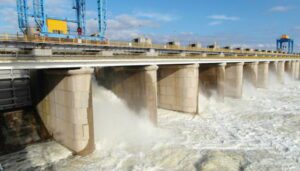
Some 47.38% of electricity sold on the day ahead market (DAM) and intraday market (IDM) in May was produced from hydropower, and 20.34% from nuclear fuel, according to a report by JSC Market Operator on environmental aspects for May 2022.
“The share of electricity sold on DAM and IDM, produced from solar energy, amounted to 17.24% in May, from coal – 5.66%, from natural gas – 4.32%, from wind energy – 1.61%, from biogas – 0.99%, from biomass – 0.25%, and from fuel oil – 0.18%,” the report says.
According to the published data, in May, 1.63% of electricity was sold on the spot market, the source of which is not determined, and the origin of another 0.4% of electricity is unknown due to the failure of some market participants to provide relevant information, the company noted.
As follows from the report, in total, in May 2022, 31.5% less electricity was sold on DAM and IDM compared to April – 528,284 MWh versus 770,883 MWh, respectively, in 56.5% less than in March (1.243 million MWh), 88.5% less than in February (4.607 million MWh) and 89.3% less than in January 2022 (4.924 million MWh).
According to Market Operator, out of the total volume of electricity generated in January-May this year, 32.35% was produced from nuclear fuel, 26.58% – from coal, 14.33% – from hydropower, 7.72% – from natural gas, 4.74% – from wind energy, 3.74% – from solar energy, 2.06% – from fuel oil, 0.55% – from biogas, and 0.33% – from biomass.
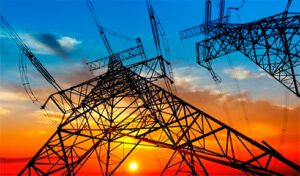
Ukrenergo offers several options for distributing funds that will be received by the company from the sale at auctions of interstate cross-sections for commercial electricity exports to Europe, Head of the operator Volodymyr Kudrytsky said at a press conference in Kyiv on Wednesday.
According to him, the potential supply of generating capacities of Ukraine, which can be released and directed to the export of electricity, is calculated in gigawatts. At the same time, according to the current legislation, the proceeds from Ukrenergo shall be directed to the development of interconnectors.
“Given the scale of potential income, we simply won’t be able to use so many funds in the short term. In such a situation, various mechanisms for socializing this money into the energy sector are possible. For example, we have debts on the balancing market, and we can pay off debts over a certain period of time proportionally to all market participants using this money,” Kudrytsky said.
The head of Ukrenergo said that energy companies would be able to stabilize their work by using the money received to prepare for the upcoming winter, purchase fuel and carry out repairs.